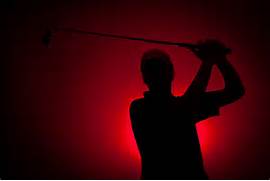PACE-OF-PLAY
Slow play is a challenge and an opportunity in golf. A slow player can ruin the day for players behind him-her; and in the interest of other golfers, players need to make a commitment to play at a reasonable pace. As an added variable in the pace-of-play equation, the number one revenue producer on golf courses is greens fees. Course management has an obligation to their respective boards or management teams to fill as many tee times with foursomes as are available. From this perspective, pace-of-play becomes a total team effort between golfers and course management. Some pace-of-play concepts to learn and practice are as follows:
PLAY “READY GOLF”
- When ready to make a shot, and it is safe, shoot.
COURTESY
- Watch the shots of playing partners to facilitate locating golf balls for next shots.
ON THE TEE
- To facilitate ball identification, let other players know the name of the ball and the ball’s markings you are playing.
- Be ready to play when the fairway or green is clear.
- Choose the set of tees that fits your game.
- Shorter hitters should hit first.
- Carry an extra ball in your pocket.
- If it appears that your original ball may be difficult to find, it is a good idea to play a provisional ball.
IN THE FAIRWAY-ROUGH
- Hit when ready and safe.
- Drop your cart partner off for their shot and drive to yours.
- If another player is walking to their ball and you are ahead of them, make your shot.
- Take multiple clubs to your ball and hit without delay.
- Before reaching the green and having double par, pick up, place ball on the green and putt to hole out.
ON-THE-GREEN
- Before going to the green with your putter, golf cars, pull carts and golf clubs need to be parked or placed between the green on which you are going to putt and the next teeing ground.
- First person on the green is in charge of tending the flag and watching for and retrieving clubs left on the green when leaving the green. When putting is complete, be ready to pick up and replace the flag. To prevent lost golf clubs, a good practice is to place the short game clubs you have used on the green between the flag and your golf car, golf cart or golf bag.
- Study and line up your putt while others are putting.
- When practical, continue putting until holed out.
- If a partner has a sand shot, be prepared to help with raking.
- Leave the green immediately after holing out and proceed to the next tee.
- Bag your clubs and complete your scorecard at the next teeing ground.
ON PAR 3 GREENS
- Upon reaching the green, if the group behind you is waiting on the tee to hit, stand in a safe area and have the group hit.
WATER BALLS
- If your ball goes into a water hazard and is accessible, take the time to retrieve only your ball.
LOST BALL
- Limit search for lost balls to three minutes. If pressed for time and the next hole is open, wave the group behind through.
Be your own best pace-of-play coach by identifying the ways you can pick up the pace-of-play. Rules of Golf, Rule 5.6b, tells us, “When it is the player’s turn to play:
- It is recommended that the player make the stroke in no more than 40 seconds after he or she is (or should be) able to play without interference or distraction, and
- The player should usually be able to play more quickly than that and is encouraged to do so.”
As P.G. Wodehouse offers, “To find a man’s true character (personality, mentality and magnetism), play golf with him.”
Go to www.usga.com to learn about USGA pace-of-play programs, insights and suggestions.


